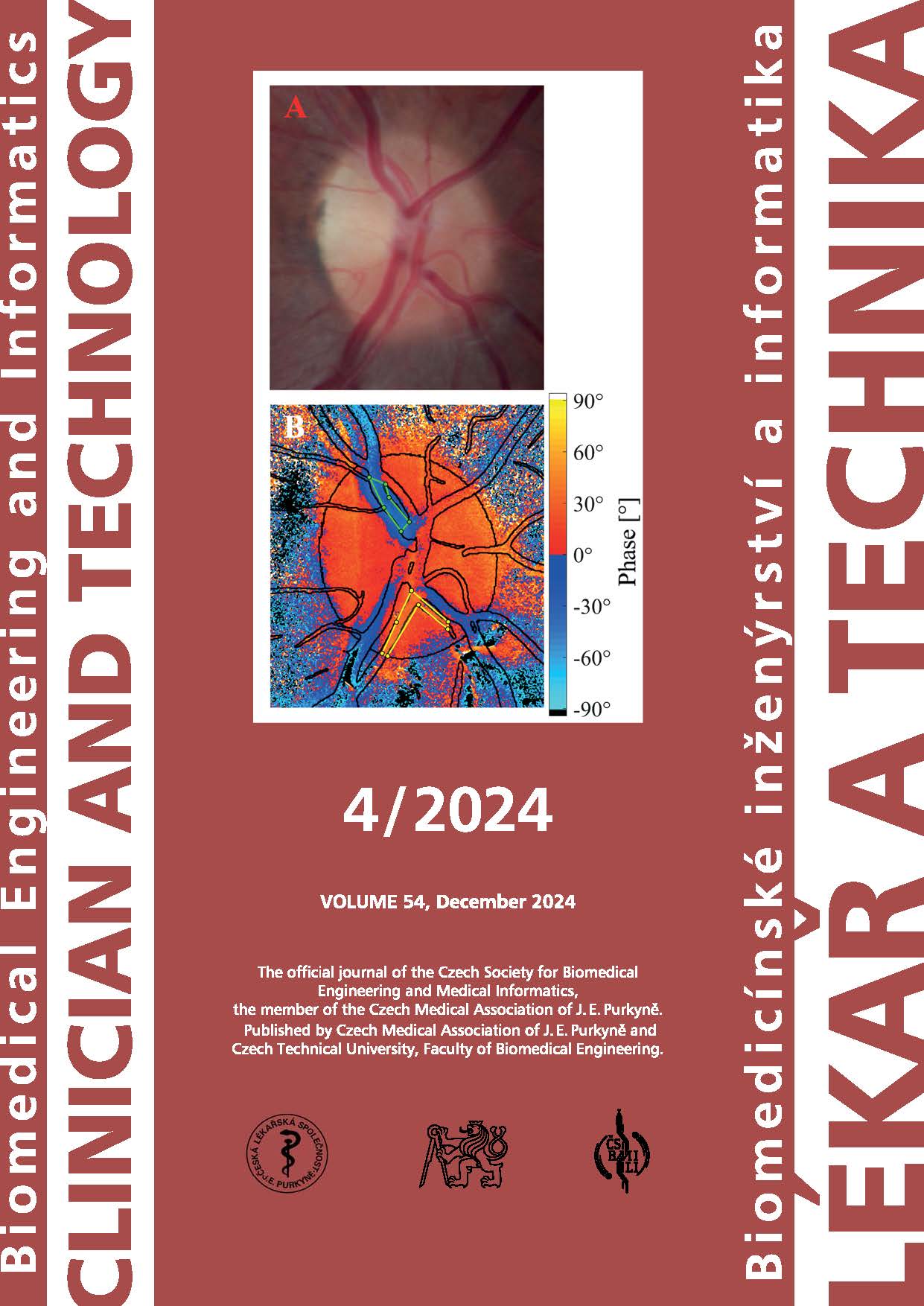IMPROVED SYSTOLIC PEAK DETECTION IN PHOTOPLETHYSMOGRAPHY SIGNALS: FOCUS ON ATRIAL FIBRILLATION
DOI:
https://doi.org/10.14311/CTJ.2024.4.05Abstract
Photoplethysmography (PPG) is a widely recognized non-invasive optical technique for monitoring blood volume changes. Recently, PPG signals have gained prominence in healthcare applications, including the detection of cardiac arrhythmias. Cardiac arrhythmias represent a significant global health challenge, with particular focus on identifying atrial fibrillation (AF), the most prevalent type. Accurate detection of systolic peaks in PPG signals is crucial for arrhythmia detection and other applications such as heart rate estimation and heart rate variability analysis. Despite the high accuracy of existing beat detection methods in healthy subjects, the performance in the presence of cardiac arrhythmias is lower. This study employs a deep learning method to enhance the detection of systolic peaks in PPG signals, even in the presence of AF. The model was trained on a dataset comprising 2,477 10-second PPG segments with over 37,000 annotated PPG peaks, including data from patients with AF. Our model achieved an F1 score of 97.3% on the test dataset and F1 score of 94.8% on the test dataset when considering only patients with AF.
Downloads
Published
Issue
Section
License
Copyright (c) 2025 Enikö Vargová, Andrea Němcová

This work is licensed under a Creative Commons Attribution 4.0 International License.
Authors who publish with this journal agree to the following terms:
- Authors retain copyright and grant the journal right of the first publication with the work simultaneously licensed under a Creative Commons Attribution License (https://creativecommons.org/licenses/by/4.0/) that allows others to share the work with an acknowledgment of the work's authorship and initial publication in CTJ.
- Authors are able to enter into separate, additional contractual arrangements for the non-exclusive distribution of the journal’s published version of the work (e.g., post it to an institutional repository or publish it in a book), with an acknowledgment of its initial publication in this journal.
- Authors are permitted and encouraged to post their work online (e.g., in institutional repositories or on their website or ResearchGate) prior to and during the submission process, as it can lead to productive exchanges.
CTJ requires that all of the content of the manuscript has been created by its respective authors or that permission to use a copyrighted material has been obtained by the authors before submitting the manuscript to CTJ. CTJ requires that authors have not used any copyrighted material illegally, as for example a picture from another journal or book, a photo, etc. It is the author’s responsibility to use only materials not violating the copyright law. When in doubt, CTJ may ask the authors to supply the pertinent permission or agreement about the use of a copyrighted material.
The opinions expressed in CTJ articles are those of authors and do not necessarily reflect the views of the publishers or the Czech Society for Biomedical Engineering and Medical Informatics.


